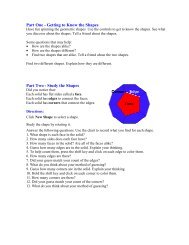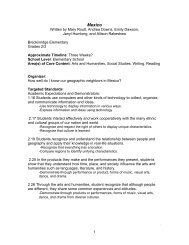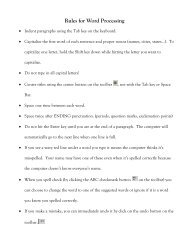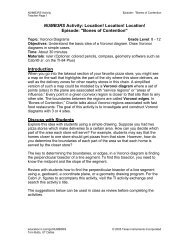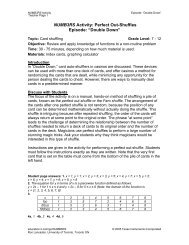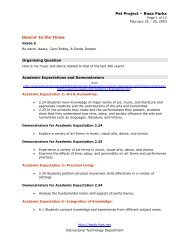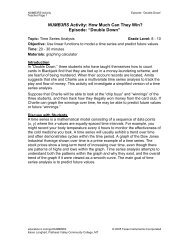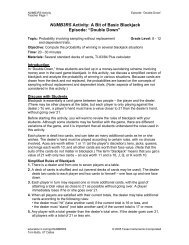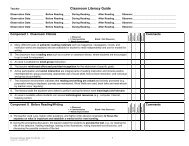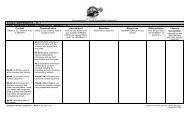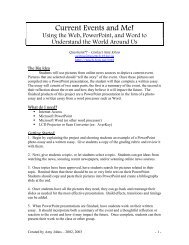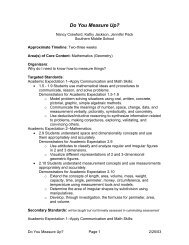Download All Elementary Music Standards (PDF) - FCPS ...
Download All Elementary Music Standards (PDF) - FCPS ...
Download All Elementary Music Standards (PDF) - FCPS ...
Create successful ePaper yourself
Turn your PDF publications into a flip-book with our unique Google optimized e-Paper software.
PRIMARY MUSIC: THIRD GRADE // ELEMENTSPROGRAM OF STUDIES:Performance Standard:Students recognize the elements of musicPerformance Standard:Students begin to recognize terminology, notation, and symbols within the elements of musicPerformance Standard:Students identify and discuss the elements of musicPerformance Standard:Students interpret and use terminology, notation, and symbols within the elements of musicACADEMIC EXPECTATION(S):1.14 – Students construct meaning and/or communicate ideas and emotions through music2.22 – Students create products and make presentations that convey concepts and feelingsin the human experience through their productions, performance, or interpretations2.23 - Students analyze their own and others’ artistic products and performancesCore Content for Assessment:AH-E-1.1.31 Rhythm: steady beat, meter(duple, triple), time signatures (2/4, 3/4, 4/4),rhythmic durations (whole, half, quarter, 8 thnotes and rests), fermataAH-E-1.1.32 Tempo: slow, fast, mediumAH-E-1.1.33 Melody: shape, direction (up,down, same, step, skip) high vs. low notes(pitches), lines and spaces, treble clef sign,pitch notation (middle C to F at top of staff)AH-E-1.1.34 Harmony: unison, parts, tonality(major, minor, resting), intervalsAH-E-1.1.35 Form: call & response, two-part(AB), three-part (ABA), verse/chorus, repeatsigns, roundAH-E-1.1.36 Timbre: sounds of individualvoices and instruments, instrument families,AH-E-1.1.37 Dynamics: soft (piano), loud(forte), medium soft (mezzo piano), mediumloud (mezzo forte), very loud (fortissimo), verysoft (pianissimo),crescendo/decrescendoDemonstrators:• Explore and respond to music through singing,instrument playing, moving, listening, reading,writing and creating• Experience and perform music from diversecultures• Recognize and develop music concepts(melody, harmony, rhythm, form expression, andstyle)• Recognize and demonstrate arts concepts usedto describe feelings• Create and/or perform original and existingworks of music• Discuss works of art using appropriate conceptsand terminology• Observe and explore a variety of artistic stylesand forms in musicSpecific Activities:• AH-E-1.1.11 – Create and notate short, simple melodies that demonstrate melodic shape/contourand meter• AH-E-1.1.12 – Create simple melodic or rhythmic accompaniments to given melodies• AH-E-1.1.13 – Improvise answers in similar style to given rhythmic and/or melodic phrases• AH-E-1.1.21 – Sing and play alone simple rhythmic or tonal patterns by reading music notation.Be able to sustain own part in an ensemble• AH-E-1.1.22 – Perform simple rhythmic, melodic or chordal patterns on classroom instruments11



